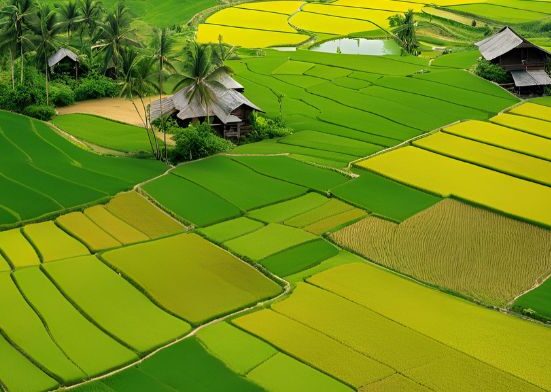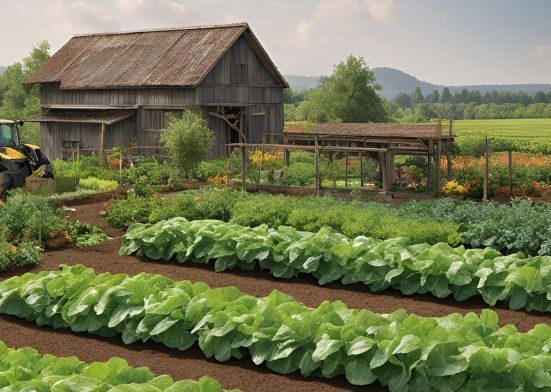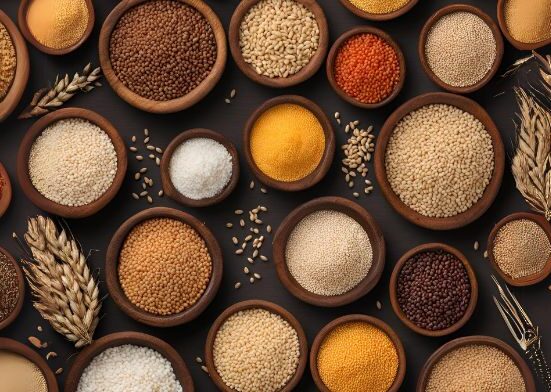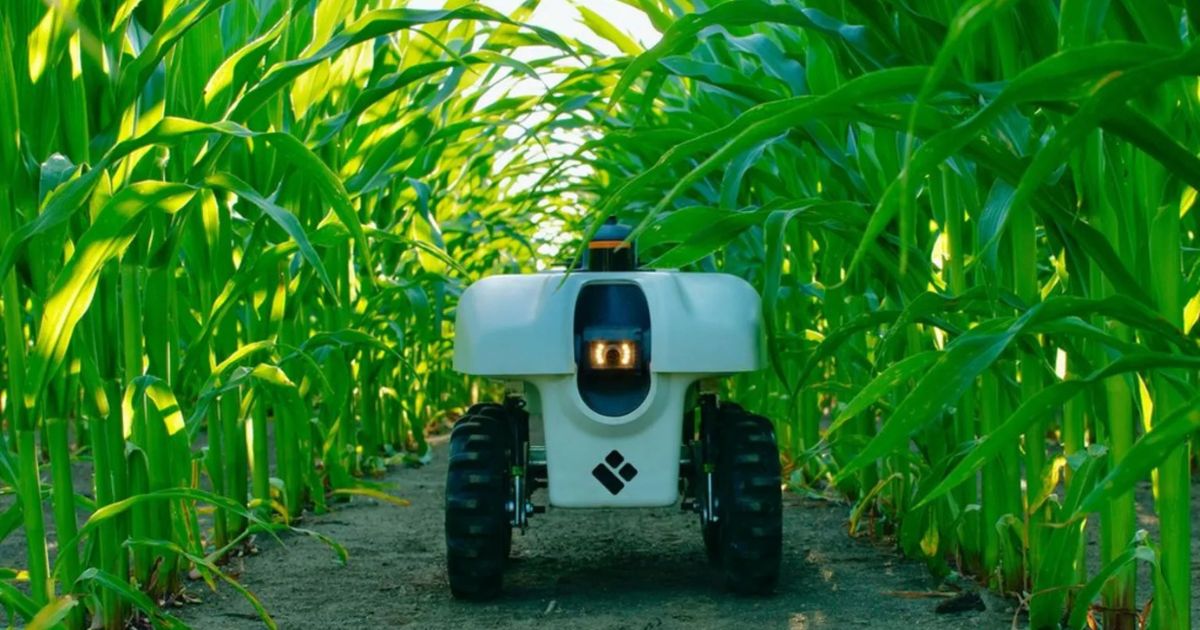In Recent years, advancements in robotics have dramatically transformed industries across the globe. One area that has benefited immensely from these innovations is agriculture. The fusion of robotics with farming practices has led to the development of cutting-edge technologies that promise to change how we cultivate, harvest, and manage crops. As the global population continues to rise, there’s increasing pressure on the agriculture industry to produce more food with fewer resources, all while maintaining environmental sustainability. Robotics in agriculture offers solutions to meet these demands and more. This blog post delves into how robotics is revolutionizing modern agriculture, the key technologies at play, and the future of farming in a world where automation is the norm.
The Intersection of Robotics and Agriculture
Robotics in agriculture refers to the use of automated machinery and technologies to perform tasks traditionally carried out by human laborers. Agricultural robotics aims to improve the efficiency, productivity, and sustainability of farming operations. By incorporating artificial intelligence (AI), machine learning, and automation, farmers can not only increase crop yields but also reduce the labor-intensive aspects of agriculture robots What Is Agriculture A Simple Guide for Everyone. farming.
Why is Robotics Becoming Integral in Agriculture?
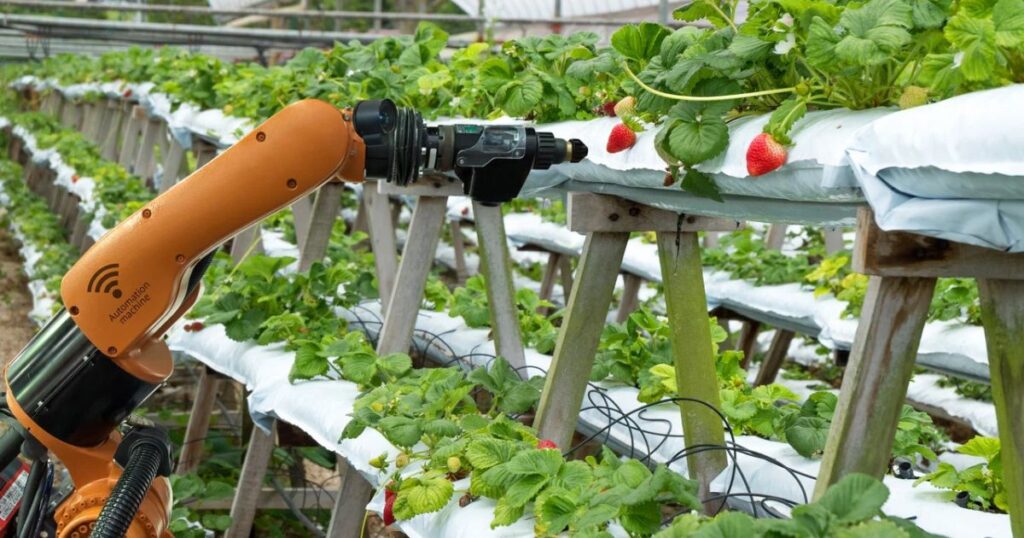 Robotics is rapidly transforming the agriculture industry by enhancing efficiency, precision, and sustainability. With an increasing global population and the need to produce more food with fewer resources, robotics offers solutions for labor shortages, reducing costs, and optimizing crop yields. Autonomous robots can perform tasks such as planting, harvesting, and monitoring crop health with greater speed and accuracy than humans.
Robotics is rapidly transforming the agriculture industry by enhancing efficiency, precision, and sustainability. With an increasing global population and the need to produce more food with fewer resources, robotics offers solutions for labor shortages, reducing costs, and optimizing crop yields. Autonomous robots can perform tasks such as planting, harvesting, and monitoring crop health with greater speed and accuracy than humans.
These robots are equipped with advanced sensors and AI that enable them to detect pests, diseases, and nutrient deficiencies early, minimizing pesticide use and improving crop quality. Additionally, drones and automated machinery can help farmers monitor large fields more effectively, collecting data that can guide decision-making for better resource management. As environmental concerns grow, robotics also aids in reducing the environmental impact by promoting more sustainable farming practices, helping to conserve water, and minimizing waste. Robotics is becoming a key player in shaping the future of agriculture.
- Labor Shortages: As rural populations decline and fewer people pursue farming as a profession, there is a significant labor shortage in the agricultural sector. Robotics can help fill this gap by performing tasks such as planting, weeding, irrigation, and harvesting.
- Sustainability: Agriculture has a substantial environmental footprint, including high water usage, pesticide application, and soil degradation. Robotics can make farming more sustainable by optimizing water use, minimizing pesticide application, and reducing soil erosion.
- Increasing Food Demand: With the global population expected to reach nearly 10 billion by 2050, there is increasing pressure on farmers to produce more food in less time. Robotics can help meet this challenge by enhancing productivity and reducing waste.
- Precision Agriculture: Robotics allows for precision farming, where crops are monitored and managed on a micro-level, helping to ensure that resources are used efficiently and the environment is protected.
Key Robotics Technologies in Agriculture
Key robotics technologies in agriculture are revolutionizing farming practices, driving efficiency, sustainability, and precision. Autonomous tractors and harvesters are capable of performing tasks like planting, tilling, and harvesting with minimal human intervention. Drones, equipped with sensors, provide real-time data on crop health, enabling precision farming and reducing pesticide usage. Robotics in irrigation systems optimizes water usage by targeting specific areas of need, reducing waste. Additionally, robot-assisted planting and weeding systems automate repetitive tasks, minimizing labor costs while enhancing productivity.
These technologies are designed to monitor and assess crop conditions, ensuring optimal growth and yield. With advancements in artificial intelligence (AI) and machine learning, agricultural robots can adapt and improve performance over time, providing farmers with valuable insights and improving decision-making. Ultimately, these innovations contribute to a more sustainable, efficient, and profitable farming industry.
Autonomous Tractors
One of the most well-known robots in agriculture is the autonomous tractor. These self-driving machines can plow fields, sow seeds, and perform other tasks without the need for a human driver. Autonomous tractors use GPS technology, sensors, and AI algorithms to navigate fields, adjust to changing terrain, and optimize fieldwork for maximum efficiency.
Autonomous tractors are a game-changer for large-scale farms. They allow for continuous work around the clock, improving productivity while also reducing labor costs. The technology is advancing rapidly, and some modern tractors even feature the ability to adjust their operations based on real-time data from the environment, such as soil conditions and robots in agriculture eather.
Drones and Aerial Robotics
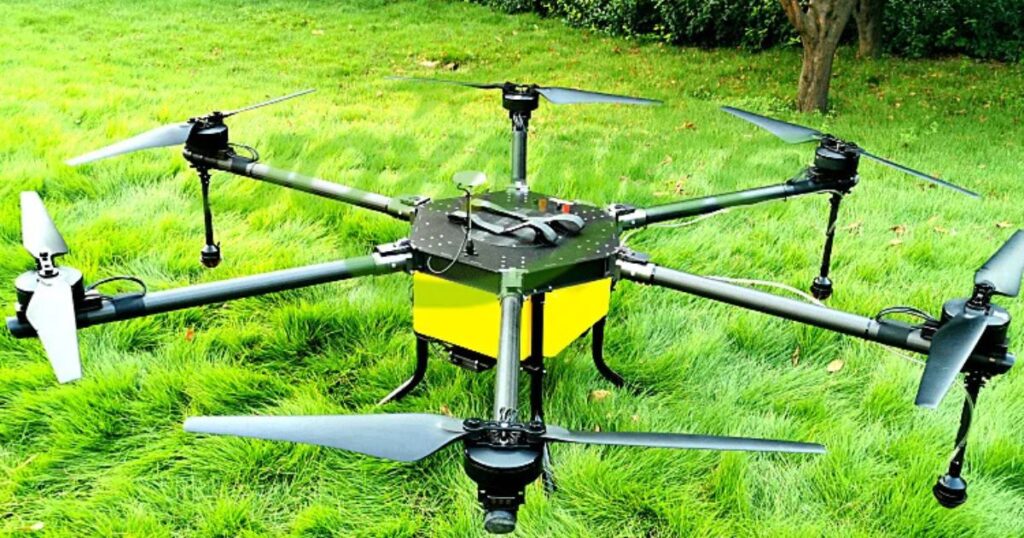 Drones have become an invaluable tool in modern agriculture. They are primarily used for monitoring crop health, assessing field conditions, and gathering data. Equipped with high-resolution cameras and sensors, drones can detect crop stress, monitor soil health, and track pests or diseases. They provide farmers with real-time data that helps them make informed decisions on irrigation, fertilization, and pest agricultural robotics control.
Drones have become an invaluable tool in modern agriculture. They are primarily used for monitoring crop health, assessing field conditions, and gathering data. Equipped with high-resolution cameras and sensors, drones can detect crop stress, monitor soil health, and track pests or diseases. They provide farmers with real-time data that helps them make informed decisions on irrigation, fertilization, and pest agricultural robotics control.
Moreover, drones can be used for precision spraying of fertilizers and pesticides, reducing the amount of chemicals used on crops and minimizing the environmental impact. By targeting specific areas that require attention, drones help ensure that resources are used efficiently.
Robotic Harvesters
Harvesting is one of the most labor-intensive tasks in farming, particularly for crops like fruits and vegetables. Traditional harvesting methods require a large workforce to hand-pick produce, which is not only costly but also prone to inefficiencies and waste. Robotic harvesters, on the other hand, use advanced AI and machine vision to identify ripe produce and harvest it with precision. These machines can navigate fields, detect the optimal time to pick crops, and gently collect them to prevent agriculture robotics damage.
Weeding Robots
Weeding is another crucial yet tedious task in farming. Traditionally, herbicides and pesticides are used to manage weeds, but this can harm the environment and lead to soil and water contamination. Robotic weeding systems offer a more sustainable solution. These robots are designed to identify and remove weeds with minimal disruption to the surrounding Modern Commercial Agriculture: Feeding the Global Economy.
Equipped with sensors, cameras, and AI, weeding robots can distinguish between weeds and desirable plants. By using mechanical or laser-based systems, these robots remove or kill weeds without the need for harmful chemicals. This not only reduces the environmental impact of farming but also helps farmers cut costs on pesticides.
Autonomous Irrigation Systems
Water scarcity is one of the biggest challenges facing farmers around the world. With climate change altering precipitation patterns, managing water usage is more critical than ever. Autonomous irrigation systems powered by robotics are helping farmers conserve water and optimize irrigation farming robotics schedules.
These systems use sensors to monitor soil moisture levels in real-time and determine exactly when and where irrigation is needed. With precision irrigation, water is distributed only where it is required, significantly reducing waste and ensuring that crops receive the right amount of water at the right time.
Soil and Crop Sensors
Sensors embedded in the soil or attached to crops provide valuable data on soil health, moisture content, temperature, and nutrient levels. These sensors are key components of precision farming, as they enable farmers to monitor the conditions of their fields with a high degree of accuracy.
Robotic systems can use data from these sensors to make real-time adjustments to farming practices, such as adjusting fertilizer application or optimizing irrigation schedules. By providing continuous feedback, these systems ensure that resources are used efficiently and that crops grow in the most favorable conditions.
The Benefits of Robotics in Agriculture
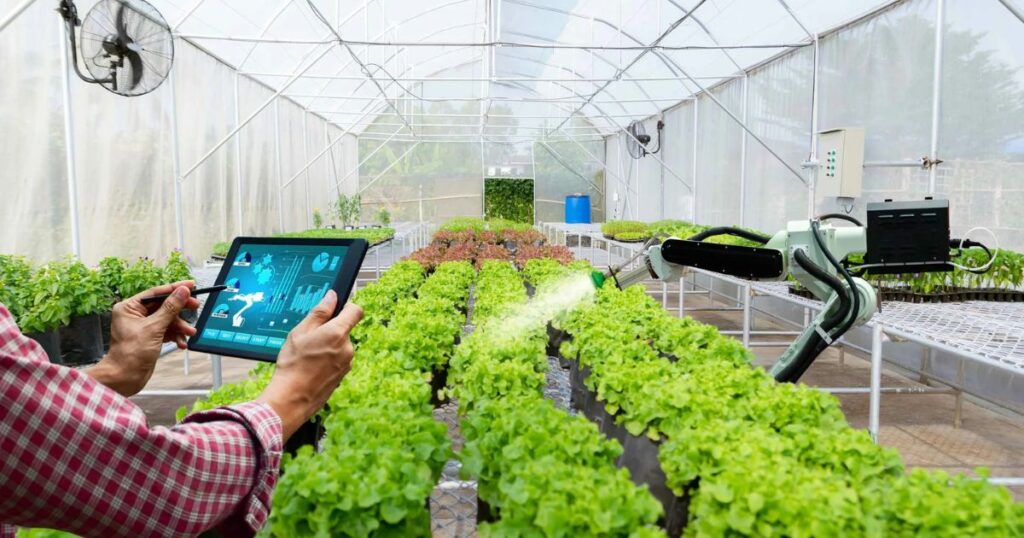 Robotics in agriculture offers significant benefits that help improve efficiency, productivity, and sustainability. Automated machinery like drones, harvesters, and planters can reduce human labor, allowing farmers to focus on more strategic tasks. These robots also perform precision agriculture, using sensors and data to optimize planting, watering, and harvesting, reducing waste and ensuring better crop yields. By utilizing robotics, farmers can minimize pesticide and fertilizer use, leading to more eco-friendly practices.
Robotics in agriculture offers significant benefits that help improve efficiency, productivity, and sustainability. Automated machinery like drones, harvesters, and planters can reduce human labor, allowing farmers to focus on more strategic tasks. These robots also perform precision agriculture, using sensors and data to optimize planting, watering, and harvesting, reducing waste and ensuring better crop yields. By utilizing robotics, farmers can minimize pesticide and fertilizer use, leading to more eco-friendly practices.
Additionally, robots can work around the clock, ensuring timely field operations, and can access areas that might be challenging for humans. They also reduce the risk of injury and labor shortages, contributing to more reliable farming operations. Overall, robotics in agriculture not only boosts productivity but also enhances the quality of food production and contributes to environmental sustainability.
Increased Efficiency and Productivity
Robots can perform tasks more quickly and accurately than humans. Whether it’s planting seeds, harvesting crops, or applying fertilizers, robots can do it all with high precision and minimal waste. This results in higher crop yields and more efficient use of resources.
Cost Savings
Although the initial investment in robotic technology may be high, the long-term savings can be significant. Automation reduces the need for manual labor, cuts down on input costs (such as pesticides and fertilizers), and minimizes waste. In the long run, robotic systems can help farmers increase their profitability by streamlining operations and lowering production costs. Sustainable Irrigation: Smart Water Management for a Greener Future
Reduced Environmental Impact
Agriculture is one of the most resource-intensive industries, consuming vast amounts of water, energy, and chemicals. Robotics can help reduce this impact by optimizing the use of resources. For example, precision irrigation systems ensure that water is used efficiently, while robots that remove weeds without herbicides minimize chemical runoff into the environment.
Improved Crop Management
Robotic systems that rely on sensors and AI can monitor crops at the micro-level, providing farmers with data on soil health, crop conditions, and potential threats. This allows for better decision-making and more effective management practices. Early detection of diseases or pests can help farmers respond quickly, preventing crop loss and minimizing the use of pesticides.
Labor Shortage Solution
As mentioned earlier, there is a growing labor shortage in agriculture. Many farmers are struggling to find enough workers to meet the demands of the growing industry. Robotics offers a solution by providing automated systems that can take over tasks traditionally performed by human laborers.
The Future of Robotics in Agriculture
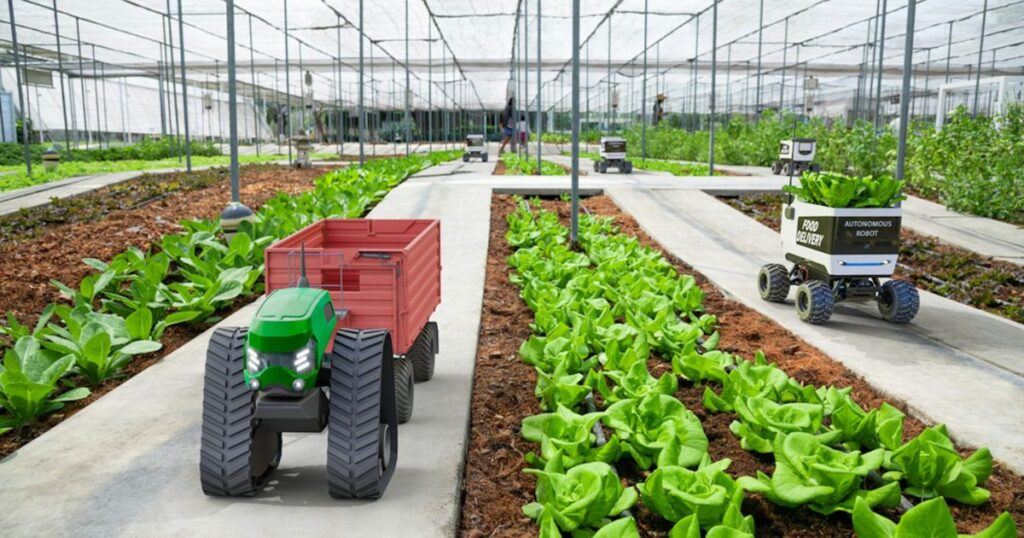 The future of robotics in agriculture promises to revolutionize farming practices with advanced automation, improving efficiency and sustainability. These systems utilize AI, sensors, and machine learning to adapt to changing conditions, optimizing crop yields while minimizing environmental impact. Autonomous vehicles, drones, and robotic arms will be key players, reducing costs and increasing productivity for farmers. Furthermore, these robots will monitor soil health, detect diseases early, and ensure that crops receive the right amount of nutrients, helping farmers make data-driven decisions. As technology advances, we can expect robots to integrate seamlessly into agricultural ecosystems, enhancing food security and supporting sustainable practices. This shift towards automation is not just about efficiency but also about creating a more resilient and eco-friendly agricultural future.
The future of robotics in agriculture promises to revolutionize farming practices with advanced automation, improving efficiency and sustainability. These systems utilize AI, sensors, and machine learning to adapt to changing conditions, optimizing crop yields while minimizing environmental impact. Autonomous vehicles, drones, and robotic arms will be key players, reducing costs and increasing productivity for farmers. Furthermore, these robots will monitor soil health, detect diseases early, and ensure that crops receive the right amount of nutrients, helping farmers make data-driven decisions. As technology advances, we can expect robots to integrate seamlessly into agricultural ecosystems, enhancing food security and supporting sustainable practices. This shift towards automation is not just about efficiency but also about creating a more resilient and eco-friendly agricultural future.
- Artificial Intelligence Integration: AI will continue to enhance the capabilities of agricultural robots, allowing them to make smarter decisions based on real-time data. For example, AI could enable robots to predict crop diseases before they spread, allowing for more targeted interventions.
- Collaborative Robotics: In the future, robots may work together on farms to perform different tasks simultaneously. For example, drones could work alongside autonomous tractors to monitor crops, while robots harvest produce in the fields.
- Small-Scale Robotics: While large-scale machines dominate the agricultural robotics space today, smaller, more affordable robots will likely emerge in the future. These could be used by smaller farmers who may not have the resources to invest in larger systems.
- Robotics as a Service (RaaS): To make robotics accessible to all farmers, we may see the rise of Robotics as a Service (RaaS) models, where farmers can rent robotic systems for specific tasks instead of purchasing them outright. This would allow smaller farms to benefit from advanced technology without the upfront costs.
Challenges and Considerations
Implementing agricultural technologies presents numerous challenges and considerations that need to be addressed for successful adoption and sustainable growth. Additionally, access to the required infrastructure and internet connectivity in rural areas may limit the implementation of tech-based solutions. Another challenge is the lack of technical knowledge and skills among farmers, making training and capacity-building essential for effective use. There is also the issue of cultural resistance, as traditional farming methods are deeply ingrained, and farmers may be hesitant to embrace new approaches.
High Initial Investment and Cost Barriers:
One of the significant challenges in adopting advanced technologies in agriculture is the high upfront investment. The cost of purchasing and installing machinery, sensors, and systems can be prohibitive, especially for smallholder farmers. Additionally, maintenance and ongoing operational costs may add to the financial strain. For many farmers, the return on investment may take several years to materialize, which discourages them from making the shift.
Technological Limitations (Sensor Accuracy, Terrain Adaptation):
While technological solutions like sensors and drones offer precision, they are still hindered by certain limitations. Sensor accuracy can be influenced by environmental factors such as weather conditions or soil variability, which can lead to unreliable data. Moreover, some technologies may not be suitable for all types of terrain or farming conditions, requiring further development and adaptation to cater to the diverse needs of global agricultural practices.
Farmer Training and Tech Literacy:
The effectiveness of new technology depends on how well farmers can use and adapt to it. In many regions, especially in rural areas, there is a significant gap in digital literacy and technical skills. Providing adequate training and ensuring that farmers can comfortably interact with new systems is critical for successful adoption. Without the proper knowledge, farmers may struggle to make the most of these innovations, thus limiting their benefits.
Data Privacy and Cybersecurity Issues:
As agriculture becomes more data-driven, concerns around data privacy and cybersecurity are rising. The collection and storage of sensitive farm data, such as yield forecasts, soil health, and financial information, pose risks if not properly safeguarded. Farmers are vulnerable to cyberattacks and data breaches that could compromise their operations or even lead to theft of valuable intellectual property. Additionally, concerns about how this data is shared with third parties or used by tech providers must be addressed to ensure trust and secure usage.
The Future of Smart Farming
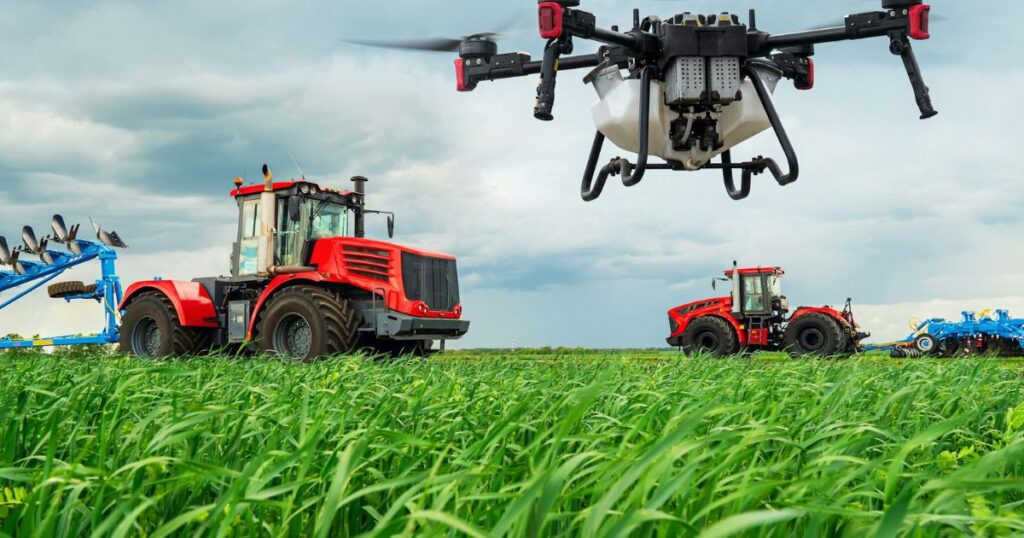 As the global population grows and the challenges posed by climate change increase, the future of farming is poised for a major transformation. Smart farming, which integrates technologies like AI (Artificial Intelligence), IoT (Internet of Things), and machine learning, is set to revolutionize agriculture. These technologies enable farmers to make real-time, data-driven decisions, optimize the use of resources, and increase yields while reducing waste and environmental impact.
As the global population grows and the challenges posed by climate change increase, the future of farming is poised for a major transformation. Smart farming, which integrates technologies like AI (Artificial Intelligence), IoT (Internet of Things), and machine learning, is set to revolutionize agriculture. These technologies enable farmers to make real-time, data-driven decisions, optimize the use of resources, and increase yields while reducing waste and environmental impact.
Integration with AI, IoT, and Machine Learning:
The combination of AI, IoT, and machine learning allows for the automation of various farming processes. IoT sensors placed in fields monitor soil moisture, temperature, and crop health. AI systems analyze this data and recommend optimal farming practices, such as when to plant, irrigate, and harvest. Machine learning algorithms continuously improve the system’s predictions, making farming more efficient and cost-effective over time. This synergy not only reduces human error but also enhances sustainability by minimizing resource usage and maximizing output.
Sustainable Agriculture Through Precision Farming
Precision farming is an approach that leverages advanced technology to ensure that crops receive exactly what they need, when they need it. This method helps farmers optimize the application of water, fertilizers, and pesticides, reducing waste and environmental damage. By using detailed data to guide decisions, precision farming minimizes the impact on ecosystems, reduces carbon footprints, and sustainably increases food production. The result is an agricultural system that can provide food security while preserving natural resources for future generations.
Role of Government Policies and Incentives
Government policies and incentives play a crucial role in the adoption of smart farming technologies. Supportive policies that offer subsidies, tax incentives, and grants can help farmers overcome the initial cost barriers of implementing AI, IoT, and machine learning technologies. Additionally, governments can establish research and development programs to accelerate innovation in the agricultural sector. By aligning policies with sustainable farming practices, governments can promote long-term environmental benefits while ensuring that farmers remain economically competitive.
Potential for Global Impact in Food Security
Smart farming holds tremendous potential to address the growing challenge of global food security. By improving crop yields, reducing food waste, and ensuring more efficient use of resources, smart farming can contribute to feeding the world’s population, even as climate change and resource depletion threaten traditional farming methods. The data-driven nature of smart farming allows for better disaster preparedness and risk management, ensuring that agricultural systems are more resilient to natural shocks like droughts and floods. This technology has the potential to bridge the gap between food production and demand, helping to ensure that everyone, regardless of geography, has access to affordable and nutritious food.
Conclusion:
Robotics is transforming the landscape of modern agriculture, offering solutions to some of the industry’s most pressing challenges, such as labor shortages, environmental sustainability, and increasing food demand. With advancements in autonomous tractors, drones, robotic harvesters, and weeding systems, farming is becoming more efficient, productive, and environmentally friendly. As the technology continues to evolve, we can expect even greater changes in how food is produced, helping to feed the world’s growing population while protecting the planet for future generations.
FAQ:
What is the role of Robotics in Modern Agriculture?
Robotics in modern agriculture focuses on automating repetitive tasks such as planting, harvesting, and monitoring crops. By using robots, farmers can increase efficiency, reduce labor costs, and improve the precision of farming practices, leading to higher yields and sustainable farming practices.
How do Agricultural Robots Improve Farm Productivity?
Agricultural robots enhance productivity by performing tasks faster and more accurately than traditional methods. They can be programmed to plant seeds, apply fertilizers, monitor plant health, and even harvest crops. This helps farmers optimize resources and make data-driven decisions to maximize output while reducing waste.
Are Agricultural robots Suitable for all types of Farms?
Agricultural robots are ideal for a variety of farm sizes and types, but their suitability depends on the scale and specific needs of the farm. While large-scale farms benefit from automation to manage vast areas, smaller farms can also use robots to enhance precision farming and reduce manual labor costs.
What are the Environmental Benefits of using Robotics in Agriculture?
Robotics promotes sustainable farming by optimizing resource use. For example, robots can apply fertilizers and pesticides with precision, reducing overuse and minimizing environmental impact. Furthermore, automation helps reduce fuel consumption and greenhouse gas emissions by replacing traditional farming machinery.
What are the Challenges in Adopting Agricultural Robotics?
The main challenges include the high initial investment, technical complexity, and the need for proper training. Additionally, the integration of robotics into existing farming operations can require significant adjustments to processes and workflows, which might be a barrier for some farmers.



